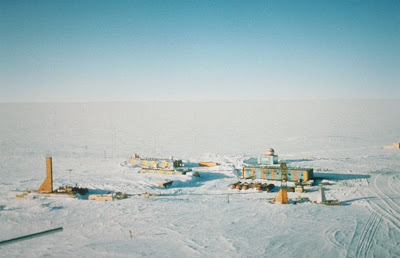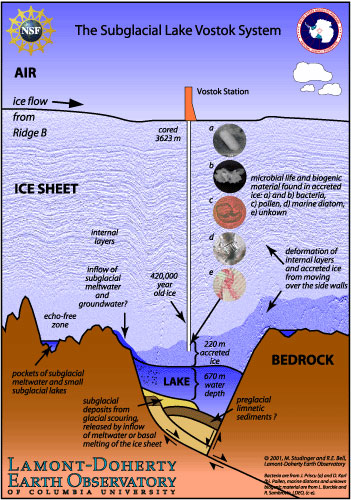The line above from a Genesis song on The Lamb Lies Down on Broadway could be describing an amazing project that resulted in a tremendous scientific breakthrough several days ago: tunneling into Earth to discover things about the outer regions of our solar system.
 |
| An aerial view of the remote Vostok Research Station. |
The Vostok Research Station, established in 1957, is located in one of the most forbidding locations on Earth, isolated on the East Antarctic ice sheet. The coldest temperature ever recorded on our planet was logged there in July 1983: minus 128.6 degrees.
What does this have to do with space exploration? The work being done here may pay off with clues to the possibility of life existing on the moons of Jupiter.
 |
| Diagram illustrating the colossal Vostok effort. |
For ten years, scientists and researchers drilled down tremendous depths, through two miles of solid ice. Their goal? To reach Lake Vostok, a huge, subterranean body of water deep below the Antarctic. On Sunday, February 5, they broke through, finally confirming that they had reached the massive underground lake, which is comparable in size to Lake Ontario.
 |
| A good time to go out and celebrate! Unfortunately, options are limited… |
Now things get interesting: despite the fact that Lake Vostok’s waters have been sealed off from the surface for millions and millions and years, debate rages over whether life in some form still exists in the waters. It is believed that gravitational forces cause high and low tide conditions, despite the fact that the sealed lake is under pressure. The motion, theoretically, provides sufficient circulation for the survival of ancient microorganisms. Similar conditions may one day lead to the discovery of life in water on the icy, frigid moons of Jupiter.
More on the project and the successful breakthrough to the waters of Lake Vostok:





